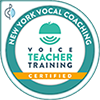
Dysarthria
What is dysarthria?
Dysarthria is an alteration in speech production. It is linked to a neurological lesion which may be congenital in nature, such as cerebral palsy, or acquired as a result of stroke, head trauma or neurodegenerative diseases such as Parkinson’s disease.
How does dysarthria manifest itself?
It must first of all be noted that there are numerous and different subtypes of dysarthria and that their manifestations may differ depending on the underlying lesion and its severity. Generally speaking, the observed manifestations result from a lack of control and coordination in the muscles of speech production (the tongue, the jaw, the lips, etc.), breathing, and phonation. As a result, a person with dysarthria would observe certain alterations:
- The articulation of sounds lose precision.
- The speech rate becomes either too fast or too slow.
- Alterations in voice production in its different parameters, such as low volume and intensity, difficulty to maintain the same pitch, breathy voice, raspy voice, nasal voice, monotone tone, etc.
- Difficulties in coordination between speaking and breathing. For example, the subject speaks in much shorter sentences and has a feeling of choking in the voice at the end of each sentence.
All of these manifestations render the person’s speech difficult to
understand. Speech and utterance therefore become tasks that require a lot of
effort on behalf of the patient which would consequently have an impact on
their communication skills, social participation as well as overall quality of
life.
How to act?
It is generally advised that a person with dysarthria be referred to a speech therapist whose role usually involves evaluating
and implementing the most suitable intervention plan for the patient. Objectives
will surely differ from one person to another and may also vary depending on
the type of dysarthria and its underlying
cause. However, the main goal of speech therapy is to make speech more
understandable and provide the patient with all the help that would permit them
to better communicate. More specific exercises will be worked on during later rehabilitation
sessions, depending on each patient’s needs: appropriate exercises in order to
improve breathing, articulation, speech rate, voice and the coordination
between those components.
In some cases, certain technical aids could also be introduced and
made available to the patient in order to make communication more streamlined (for
example: a voice amplification technology, special computerized programs that
permit the creation of words by typing or clicking on symbols or by capturing
the movements of the eyes, etc.).


